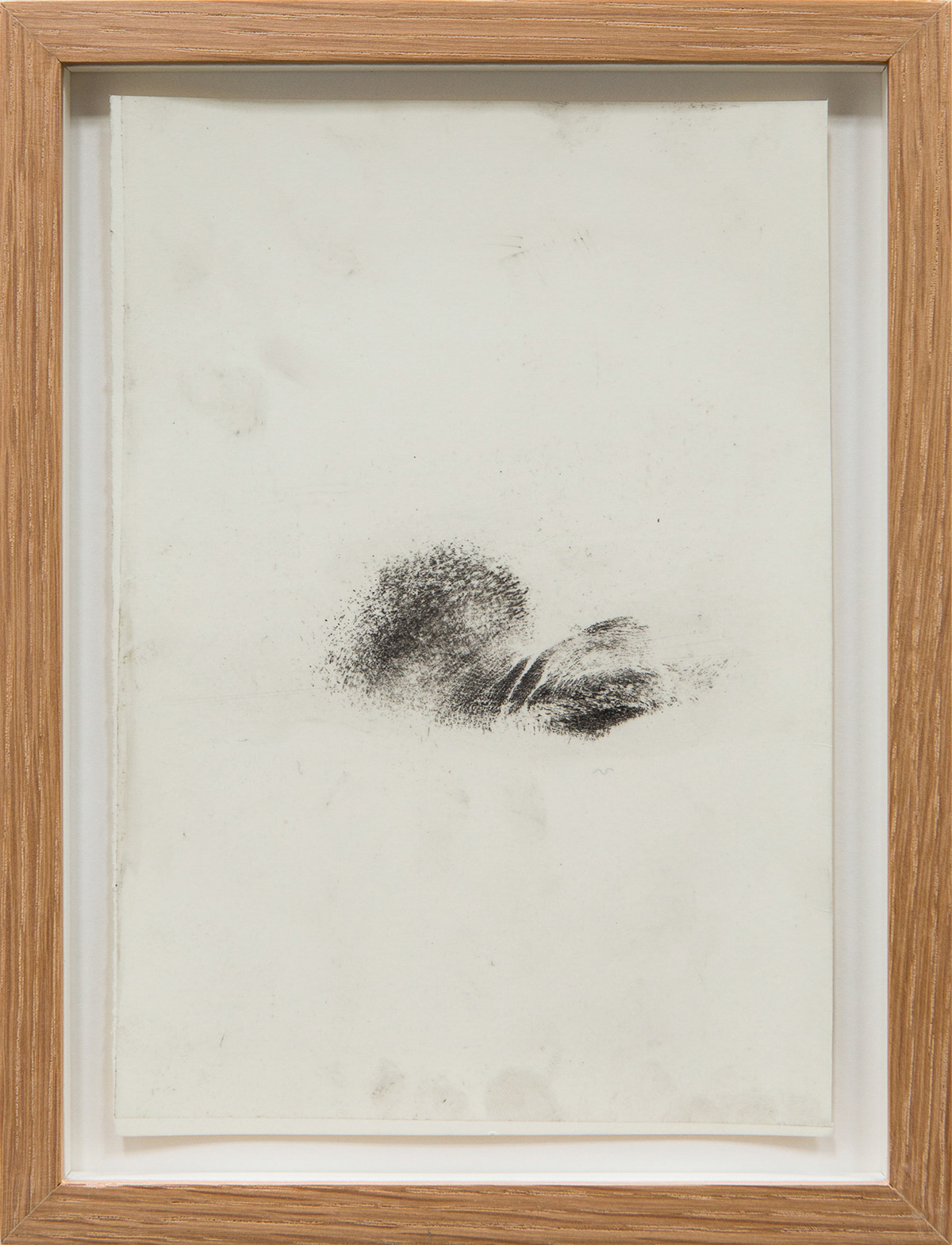Impunities – London – Originals, 2012
Series of 20 transfer prints with black velvelt powder on film and paper; 25 × 19 cm (each). © Photo: Musthafa Aboobacker, 2015
This work with the victims of domestic violence should be seen as a complement to other works in this exhibition, for example, to A Colour of Time. What connects them is the empirical, forensic approach, which elsewhere I have called the method of mimetic-indexical transformation. Processes that take their point of departure from concrete actualities are strained against history.










Nadia Kaabi-Linke makes frequent links to seemingly inconspicuous surface phenomena (such as marks, imprints, scratches, etc) in order to analyze their history of origin. This history is often traumatic and defined by the experience of violence, which no longer appears explicitly on the surface, but exists below the skin. The work emerges from a kind of contact print, which has transformative powers. It lifts the individuals from their roles as victims by turning their story, their experience, which has been physically burned into them, into public matter. But this does not happen in an exhibitionist manner, to satisfy the voyeur in us. On the contrary: by means of their translation into artwork, in Impunities the wounds take on another object-like appearance, resembling surface scratches and ordinary traces of wear and tear. As such, they become Reflections from Damaged Life (Adorno), to which the unharmed observer belongs as well.
— Falko Schmieder, 2014